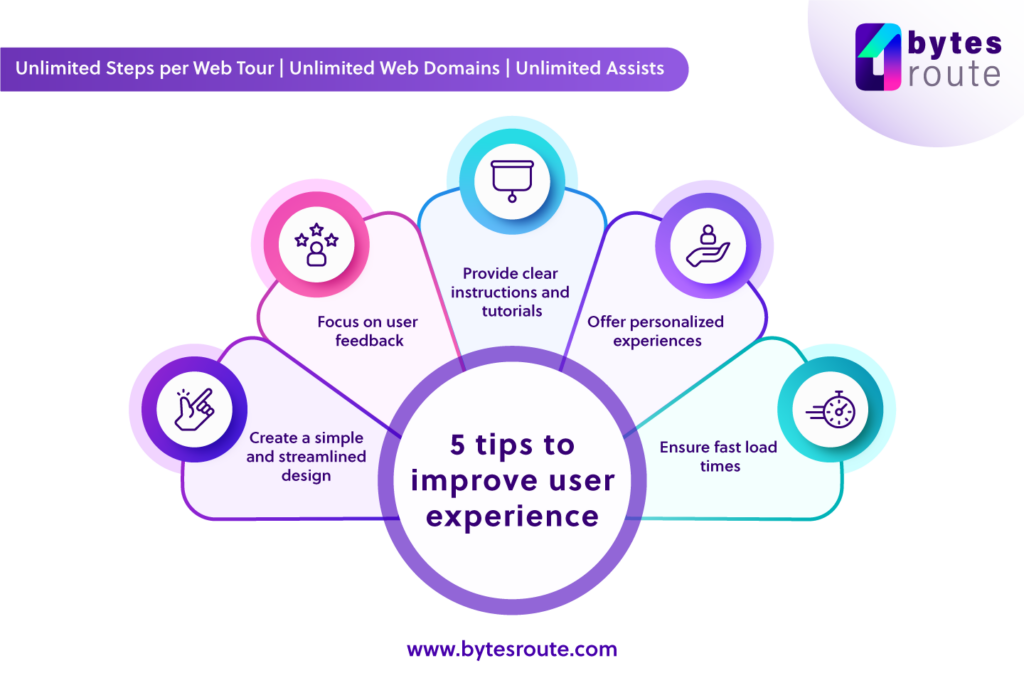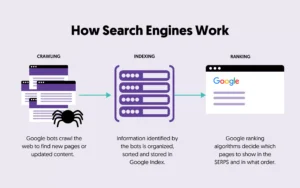User experience (UX) is vital in today’s digital world. It shapes how users feel about products.
In a fast-paced online environment, first impressions matter. A good user experience can make or break a product. It affects user satisfaction and loyalty. Companies that focus on UX see better engagement and growth. Understanding UX means looking at design, ease of use, and user needs.
This blog will explore why UX focus is essential. We’ll look at how it impacts success and what steps to take. Dive in to learn more about creating a positive user experience.

Credit: www.bytesroute.com
Introduction To User Experience
User Experience (UX) is a critical aspect of any digital product. It focuses on the interaction between users and a product or service. Good UX makes a product easy to use, efficient, and enjoyable. It can make or break the success of a digital product.
Importance Of Ux
Good UX design leads to satisfied users. Satisfied users are more likely to return and recommend the product. This means higher user retention and more word-of-mouth referrals. Companies with strong UX design often see better business results. Better results include increased sales, higher customer loyalty, and improved brand reputation.
Impact On Digital Interactions
UX directly affects digital interactions. It influences how users feel about and engage with a product. A positive UX leads to a seamless interaction. Users can complete tasks quickly and without frustration. This enhances the overall experience.
On the other hand, poor UX can lead to negative outcomes. Users might feel frustrated and leave the site. This can result in lost opportunities and revenue. Therefore, focusing on UX is essential for any digital product’s success.
Key Ux Principles
Understanding the key UX principles is essential for creating a pleasant user experience. These principles help designers create interfaces that are easy to use and meet user needs. Let’s dive into some of these principles to understand their importance.
User-centered Design
User-centered design places the user at the core of the design process. This means understanding their needs, preferences, and limitations. Designers create prototypes and gather feedback from real users. This iterative process ensures that the final product is both useful and usable. The goal is to solve user problems and provide a satisfying experience.
Consistency And Standards
Consistency and standards are crucial for building user trust. They ensure that similar functions look and behave the same across the interface. This predictability helps users learn the system quickly. Consistent design reduces the cognitive load on users. They can focus on their tasks instead of figuring out how to use the interface. Following established standards also enhances usability. It leverages users’ prior knowledge from other interfaces.
Designing For Seamlessness
Designing for Seamlessness means creating a user experience that feels effortless. Users should navigate your site without confusion or frustration. A seamless design keeps visitors engaged and encourages them to return.
Smooth Navigation
Smooth navigation is key to a seamless user experience. Clear menus guide users to the information they need. Use simple language in your menu items. Avoid technical jargon. Group related content together. This helps users find what they’re looking for quickly. Breadcrumbs are useful. They show users where they are and how to go back.
Responsive Design
A responsive design adapts to different devices. Users visit websites on phones, tablets, and computers. Your site should look good on all screens. Use flexible layouts. Images should resize automatically. Test your site on multiple devices. Ensure buttons and links are easy to tap on smaller screens. A responsive design improves the user experience for everyone.

Credit: www.insight.com
Emotional Connection
Creating an emotional connection with users is vital for a positive user experience. People are more likely to stay loyal to a brand if they feel an emotional bond. This connection can be built through various strategies, including trust-building and enhancing engagement.
Building Trust
Trust is the foundation of any successful relationship, including those between users and brands. To build trust, ensure your website is secure and reliable. Use HTTPS protocols to protect user data. Display trust badges and certifications prominently.
A clean, professional design also fosters trust. Avoid clutter and ensure easy navigation. Provide transparent information about your policies and practices. Include clear contact details and customer service options.
| Trust-Building Tips |
|---|
| Use HTTPS |
| Display Trust Badges |
| Offer Clear Contact Details |
| Maintain a Professional Design |
Enhancing Engagement
Engagement is essential for creating an emotional connection. Interactive elements on your site encourage users to participate. Implement features like comment sections, social media links, and live chats.
Personalization also boosts engagement. Use data to tailor content and recommendations to each user. This makes them feel valued and understood. Interactive and personalized experiences keep users coming back.
- Use interactive elements like comments and live chats.
- Personalize content and recommendations.
- Encourage user participation.
By focusing on building trust and enhancing engagement, you can create a strong emotional connection with your users. This connection leads to increased loyalty and satisfaction.
Accessibility In Ux
Creating an inclusive user experience (UX) means making your website or app usable for everyone. Accessibility in UX ensures that people with disabilities can use your product without barriers. This improves usability for all users. It also helps your product reach a wider audience.
Inclusive Design
Inclusive design considers the diverse needs of all users. This includes people with visual, hearing, cognitive, or motor impairments. Creating an inclusive design involves understanding these needs and addressing them. For instance, use high-contrast colors for better readability. Provide text alternatives for images and videos. Make sure your website is navigable with a keyboard.
| Impairment | Design Consideration |
|---|---|
| Visual | High-contrast colors, text alternatives for images |
| Hearing | Subtitles for videos, visual alerts |
| Cognitive | Simple language, clear navigation |
| Motor | Keyboard navigation, large clickable areas |
Tools And Techniques
Several tools can help you ensure your design is accessible. Screen readers like JAWS and NVDA can show how your site works for visually impaired users. Color contrast checkers ensure your text is readable against its background. Use these tools to test and refine your design.
- Screen readers (JAWS, NVDA)
- Color contrast checkers
- Keyboard navigation testing
- Accessibility checkers (WAVE, Axe)
Techniques like using semantic HTML improve accessibility. Semantic HTML tags help screen readers understand your content. Aria labels can also provide additional information to assistive technologies. Ensure all interactive elements are accessible via the keyboard. This helps users who cannot use a mouse.
Usability Testing
Usability Testing is a key component in creating a seamless user experience. It helps identify issues in your design and functionality. This process ensures that the end product is user-friendly and efficient.
Methods And Tools
There are various methods and tools for usability testing. Each method has its unique benefits. Here are some common ones:
- Moderated Testing: A facilitator guides users through tasks. This provides direct feedback.
- Unmoderated Testing: Users complete tasks independently. This method is cost-effective.
- Remote Testing: Conducted online. This allows testing with a broader audience.
- In-Person Testing: Offers immediate interaction and observation. This provides in-depth insights.
Some popular tools used in usability testing include:
| Tool | Description |
|---|---|
| UserTesting | Offers real-time user feedback. |
| Hotjar | Visualizes user behavior with heatmaps. |
| Lookback | Enables live moderated testing. |
| Optimal Workshop | Provides various usability testing tools. |
Iterative Improvements
Usability testing should be an iterative process. This means testing, improving, and then testing again. Here are the steps:
- Identify usability issues.
- Make necessary design changes.
- Test the updated design.
- Repeat until the user experience is optimal.
This process ensures continuous improvement. It helps in refining the user experience over time. Iterative improvements lead to a polished and user-friendly product.
Integrating Feedback
In today’s digital world, focusing on User Experience (UX) is crucial. One effective way to improve UX is by integrating feedback. This means understanding user needs and preferences through various methods. By doing this, you can enhance your product’s usability and overall user satisfaction.
User Surveys
User surveys are a direct way to gather feedback. They allow users to share their thoughts and suggestions. You can ask specific questions about different aspects of your product. For example:
- How easy is it to navigate our website?
- What features do you find most useful?
- What changes would improve your experience?
These questions help you identify areas for improvement. Surveys can be conducted through:
| Method | Description |
|---|---|
| Email Surveys | Send a questionnaire directly to users’ inboxes. |
| On-site Surveys | Pop-up surveys on your website during user visits. |
| Social Media Polls | Quick surveys on social media platforms. |
Analytics And Metrics
Analytics and metrics provide valuable insights into user behavior. By analyzing data, you can understand how users interact with your product. Key metrics to monitor include:
- Page Views: Number of times a page is viewed.
- Session Duration: Time users spend on your site.
- Bounce Rate: Percentage of users leaving after viewing one page.
- Conversion Rate: Percentage of users completing desired actions.
Using tools like Google Analytics can help track these metrics. This data helps identify trends and user preferences. It also highlights problem areas needing attention.
Incorporating feedback from surveys and analytics helps create a user-centered product. This approach leads to a better user experience and increased satisfaction.

Credit: www.doubledome.com
Future Of User Experience
The future of user experience (UX) is rapidly evolving. Businesses must stay ahead by embracing new trends and technologies. UX focuses on creating seamless interactions between users and products. This ensures satisfaction and loyalty. Let’s explore the emerging trends and innovative technologies shaping the future of UX.
Emerging Trends
Several emerging trends are shaping the future of UX. These trends focus on improving user satisfaction and engagement:
- Personalization: Tailoring experiences to individual users based on their preferences.
- Voice User Interface (VUI): Using voice commands for interaction with devices.
- Micro-interactions: Small design elements that enhance user experience.
- Inclusive Design: Ensuring products are accessible to all users, including those with disabilities.
Innovative Technologies
Innovative technologies play a crucial role in shaping the future of UX. These technologies enhance user interactions and create more engaging experiences:
| Technology | Description |
|---|---|
| Artificial Intelligence (AI) | AI helps create personalized experiences and improve customer service. |
| Virtual Reality (VR) | VR provides immersive experiences, making interactions more engaging. |
| Augmented Reality (AR) | AR overlays digital information on the real world, enhancing user interaction. |
| Blockchain | Blockchain ensures secure transactions and data privacy for users. |
These technologies are transforming user experience. Businesses must integrate them to stay competitive.
Frequently Asked Questions
What Is User Experience?
User Experience (UX) refers to how a user interacts with a product. It encompasses usability, accessibility, and overall satisfaction. Good UX design ensures a product is user-friendly and meets user needs efficiently.
Why Is User Experience Important?
User Experience is crucial for user satisfaction and retention. A positive UX leads to increased user engagement and loyalty. It can also boost conversions and overall business success by ensuring users have a smooth experience.
How To Improve User Experience?
To improve UX, focus on user research and feedback. Design intuitive interfaces and test regularly for usability issues. Prioritize accessibility and ensure your design caters to all users, including those with disabilities.
What Are Key Elements Of Ux Design?
Key elements of UX design include usability, accessibility, and visual design. Information architecture and interaction design also play significant roles. Together, these elements ensure a seamless and enjoyable user experience.
Conclusion
Focusing on user experience is essential for website success. Good design improves engagement. Simple navigation keeps users happy. Fast loading times reduce bounce rates. Clear, concise content holds attention. Prioritize user feedback for continuous improvement. Always test and refine your site.
A positive user experience builds trust and loyalty. Happy users become repeat visitors. Your website’s success starts with their satisfaction. Keep user needs front and center.

Sofia Grant is a business efficiency expert with over a decade of experience in digital strategy and affiliate marketing. She helps entrepreneurs scale through automation, smart tools, and data-driven growth tactics. At TaskVive, Sofia focuses on turning complex systems into simple, actionable insights that drive real results.

























